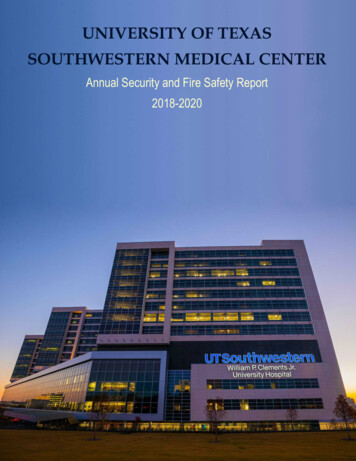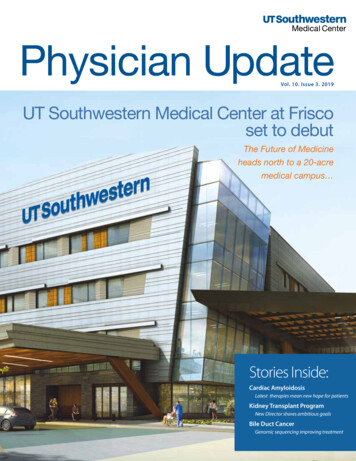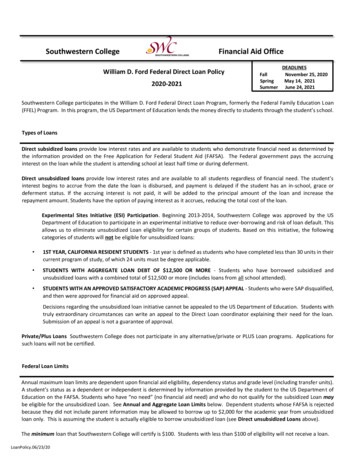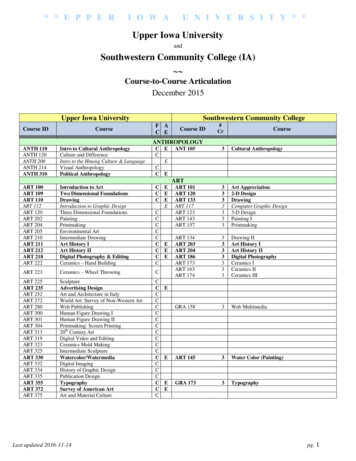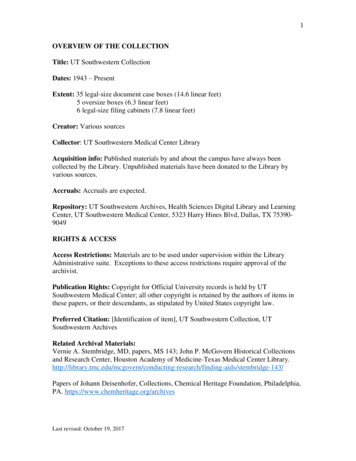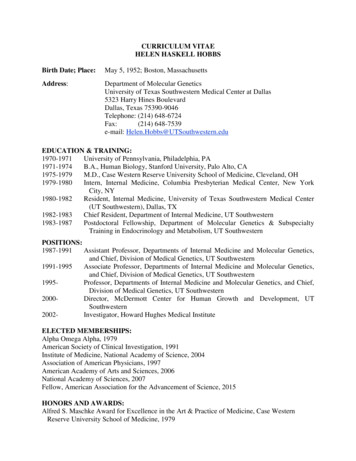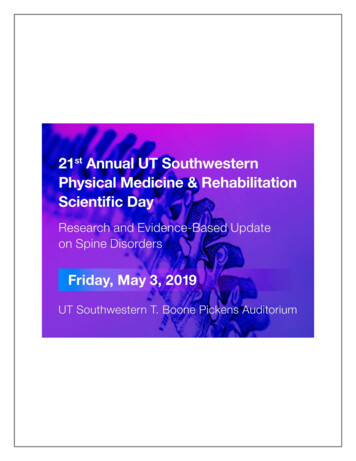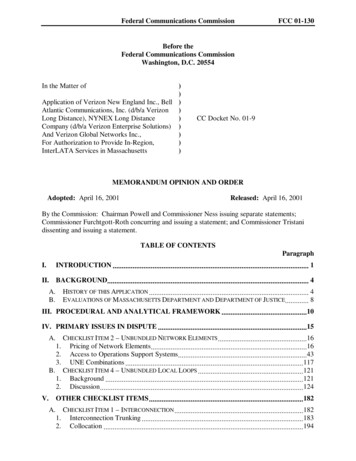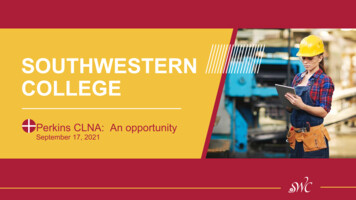
Transcription
SOUTHWESTERNCOLLEGEPerkins CLNA: An opportunitySeptember 17, 2021
Southwestern CollegeEconomic and Workforce DevelopmentCommunity Task Force
College Steering Committee Academic Senate PresidentCE Committee Members - CE Faculty leadsCredit and NC CounselorsCareer Center DirectorVPs (3) and All Academic and Student Service Deans (7)Dean of Institutional Research and PlanningDirector of Restorative JusticeDirector of Continuing EducationRepresentatives from SWC Regional Economic Development Initiatives: Centerfor Business Advancement SBDC, WBC, PTACSouthwestern College I Career Education3
SWC Economic and Workforce Development Community Task Force? Employers & Industry Associations from each sector Workforce Agencies: SDWP, SCEDC RDs from each sector K-12 CTE instructors, counselors, and administrators - including representatives ofthose that serve special populations University Partners CBOs that agencies serving out-of-school youth, homeless children and youth, andat-risk youth CE Faculty (including counselors), administrators and VPs parents/students and representatives of special populationsMet to receive an overview and engage in the effort, provided input and guidediscovery, asked critical questions and reviewed plan along the waySouthwestern College I Career Education4
What is the role of the SWC Economic and Workforce DevelopmentCommunity Task Force?Why are we here? It’s because you are part of. Preparing & Supporting Students Educating & Upskilling Students Hiring, Employing and Accepting SWC StudentsWhat are we here to help do? Alignment of Educational Programs and Services to Meet Community and Business needs Identify Local Resources Partnership DevelopmentWhat will our work result in?A Plan/Guide for the College that will be utilized for Resource Investment Expansion/contraction of programs and services Curricular review Leveraging of local resourcesSouthwestern College I Career Education5
CLNA ContentsElement 1: Student PerformanceElement 2: Program Size, Scope, and Quality to Meet the Needs of All StudentsElement 3: Progress Towards Implementation of CE Programs of StudyElement 4: Improving Recruitment, Retention, and Training of CE ProfessionalsElement 5: Progress Towards Equal Access to CE Programs for All StudentsElement 6: Alignment to Labor Market Information (LMI)General Industry Cluster AnalysisRegional Supply and DemandRegional Economic AnalysisSouthwestern College I Career Education6
CLNA ContentsRegional Population AnalysisPopulation and AgeHousehold IncomeLiving WageEducational AttainmentRace and EthnicityLanguage Spoken at HomeHousing CharacteristicsWorker ProfileCommuting ProfilePotential Student PopulationsConsortium Coordination StrategySouthwestern College I Career Education7
Link: Southwestern CollegeComprehensive Local NeedsAssessment
What We Learned?1. We are outperformed district and state targets acrossmost metrics, but some areas for improvementremain.High Performance Completion rates as well as postsecondary placement rates SWC students are continuing their education, entering the military, or findingemployment Persistence and transfer rates as well as non-traditional nsiveLocal NeedsAssessmentOpportunities for Improvement Retention and success rates are lower among African-American, Hispanic, andPacific Islander studentsSouthwestern College I Career Education9
What We Learned?2. Programs generally have sufficient size, scope, andquality to meet the needs of students, but thereremain opportunities for bolstering student Workbased Learning opportunities.High Performance Early access to SWC Career Education (through the HighSchool Special and College Bound Program) has increased bymore than 10-fold over the past three and a half years.Both over-enrollments and waitlists are on the decline.Two-thirds of Career Education students searching for jobsafter graduation found employment within three or fewermonths, either ‘very closely’ or ‘closely’ aligned to their field ofstudy.Opportunities for Improvement Availability of Work-based Learning (WBL) opportunities wererelatively sparse.Southwestern College I Career Education10
What We Learned?3. Career pathways and guidance has and shouldcontinue to be an area of emphasis for SWCOpportunities for Improvement Career pathways available to students should be aligned with industry clustersand include educational pathways that highlight the wide array of careersavailable from a given program within an industry (a career lattice). career pathways should be communicated earlier The research also highlights a general gap in student awareness of theresources available to them. An orientation process that includes an outline ofthe services available to students (including career pathways and navigationresources) may help raise awareness and usageSouthwestern College I Career Education11
What We Learned?4. Southwestern College has made notable progresstowards representative faculty and staff and hasinitiatives in place to continue the trendHigh Performance The College has also created an Advisory Task Force onInclusion and Race and has overhauled the hiring andinterviewing processes for hiring new talent. SWC has made notable progress in this area, hiring more than80 Hispanic employees between the fall semesters of 2015and 2018.Opportunities for Improvement More than half (55%) of faculty were White non-Hispanic,compared to about 14% of the student body. Conversely, Hispanic students made up 64% of the studentpopulation but only 25% of academic faculty identified asHispanic.Southwestern College I Career Education12
What We Learned?5. Overall special population enrollments and successrates are increasing, though some populations anddemographics remain disadvantaged.High Performance Non-traditional, economically disadvantaged, limited Englishproficiency, and students with disabilities have higher programcompletion rates than the broad CE cohort,Opportunities for Improvement Despite progress, some challenges still remain. For example,students with limited English proficiency (67%) and students withdisabilities (71%) face lower employment rates than the broader CEcohort (77%)Investigation into the awareness, usage, and effectiveness of supportprograms may illuminate some of the reasons behind thesedisparities.Southwestern College I Career Education13
What We Learned?6. Southwestern College’s 75 Career Educationprogram offerings provide students with a widerange of options that are well-aligned with theregional labor market.High Performance After accounting for completions at other regional institutions,no SWC programs result in an over-supply of labor to relevantoccupations.Opportunities for Improvement There is evidence that there may even be an under-supplyof completions among many programs; 21 programs have20 or more annual openings for every regional completion.These programs include Business and Marketing, Civil andConstruction Management Technology, Automotive, andParalegal offerings.Our unique geographic location presents notable andgrowing employment opportunities in industries includingLogistics, Healthcare, and Building and Design.Occupations related to International Business and Tradeand Logistics/Materials TransportSouthwestern College I Career Education14
What We Learned?7. Job quality in the Southwestern College study region isrelatively lower than San Diego County and the broaderstate, but that may be changing. Tier 3 jobs (those that are generally lower-skill and lower-paying such as Janitors and Food Service Workers) account for nearly half (48%) of all jobs inthe region.The SWC study region is also a net exporter of Management, Business,Science, and Arts occupations, with more than 15,000 residents who work inthese occupations commuting outside the region to go to work.Encouragingly, the number of tier 1 jobs (higher-skill and higher-paying rolessuch as Engineers, Managers, and Lawyers) (12%) and tier 2 jobs (middleskill and middle-paying roles such as Administrative Clerks and Machinists)(8%) are growing faster than tier 3 jobs (8%). This suggests that overall jobquality in the region is increasing, as more higher-paying employmentopportunities become available.Southwestern College I Career Education15
Gap Analysis & CNLA Recommendations1. Encourage career exploration at the early stages of interest or enrollment.2. Bolster existing career pathway initiatives to be more comprehensive, clear, andlinked to industry clusters.3. Connect High School and Adult School career pathways.4. Create career pathways that are geared for both the long and short term.5. Continue to strengthen regional partnerships.6. Increase Work-Based Learning opportunities (WBL).7. Continue efforts to increase access and awareness of resources and programsmeant to assist current and potential students.8. Remedy the gap in student writing.9. Continue to increase the use of data at Southwestern College.Southwestern College I Career Education16
Phase 2 ComponentsDemand Side Analysis Identify target industry clusters (4-5 in total)Develop an Economic Development Profile Tracking historical regional establishment counts by size and industry Examination of existing local Economic Development Programs and opportunities for funding andcollaboration Analysis of the talent needs of small businesses and potential opportunities for SWC programadjustment, development, or collaborations.The following industry clusters in the SWC study region that have the greatest concentration of jobs relative to thenational average: Healthcare; Tourism, Hospitality, and Recreation; and Defense, Aerospace, andTransportation Manufacturing (DATM) were the fastest growing between 2014 and 2019.Southwestern College I Career Education17
Phase 2 ComponentsRegional Employers (Needs, Perceptions and Challenges) Detailed breakdown of employer needs from SWC, as well as their challenges and mostsought occupations, skills, and certifications (among both general and targeted industries)Regional impacts of COVID-19 pandemic and employer expectations and concerns (amongboth general and targeted industries)Description of employer perceptions of SWC students. This will include perceived areas ofstrength and those warranting improvement.Exploration of employer interest in participating in work-based learning, both in physical andonline environmentsSouthwestern College I Career Education18
Phase 2 ComponentsGap Analysis Investigation into areas of strong market demand where no existing programs offered atSWCCurrent work-based learning opportunities and an investigation of potential regional partners.Career and education pathways and lattices Examination of existing career pathways within target industries. Recommendations for the adaption or creation of new career pathways and lattices,including stackable credentials and short-term trainings within target industries. Inclusion of suggested educational pathways and requirements.Southwestern College I Career Education19
Phase II Final RecommendationsExpand & Enhance WBL Efforts 51% of employers are interested in some form of collaboration with SWCEmphasize “real-world” Engagement Activities Employers indicate skills like problem-solving and social and verbal communicationare consistently the most important skills and/or are deficient in current applicantsExpand & Enhance WBL Efforts 51% of employers are interested in some form of collaboration with SWCEmphasize “real-world” Engagement Activities Employers indicate skills like problem-solving and social and verbal communicationare consistently the most important skills and/or are deficient in current applicantsSouthwestern College I Career Education20
Phase II Final RecommendationsCollaborate with Regional Economic & Workforce DevelopmentOrganizations Opportunity to establish connections with new employers in expanding andemerging fieldsSupport Programs in Key Industry Clusters Architecture, Design, and EngineeringBuilding and ConstructionInformation and Communication TechnologyManufacturing and DesignLogistics and TransportationSouthwestern College I Career Education21
The Big Picture1. Phase I and Phase II resulted in a 3-Year Economic & Workforce Development (EWD)Strategic Plan2. The EWD Strategic Plan ties directly to: Vision for Success Goals Institutional Strategic Plan Governing Board and College Goals Strategic Enrollment Plan SEAP (Equity Plan) Guided Pathways3. Utilized as part of the Perkins/SWP Funding Criteria4. Utilized as part of Program Review5. Increased strategic partnerships that will increase: Enrollments WBL Opportunities Employment Opportunities in Field of Study Expanded Industry Advisory Committees Pathway Development with K-12 and Adult SchoolsSouthwestern College ICareer Education22
THANK YOUJennifer Lewis, DeanContinuing Education and Workforce DevelopmentSouthwestern Collegejlewis2@swccd.edu
Southwestern College I Career Education. 14. What We Learned? 6. Southwestern College's 75 Career Education program offerings provide students with a wide range of options that are well-aligned with the regional labor market. High Performance After accounting for completions at other regional institutions,

